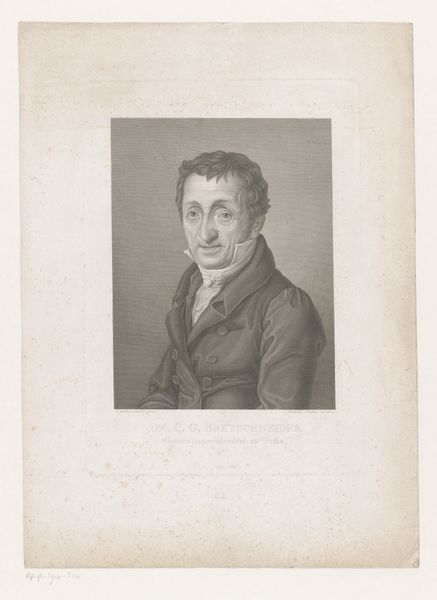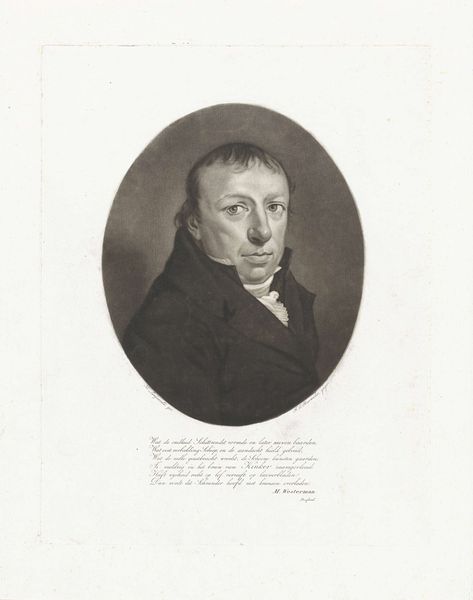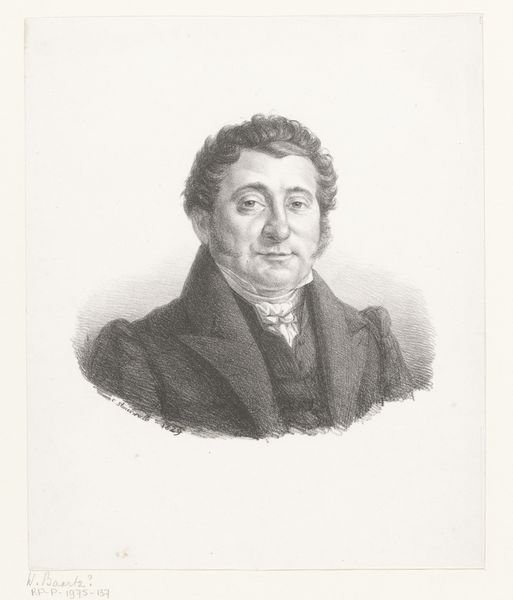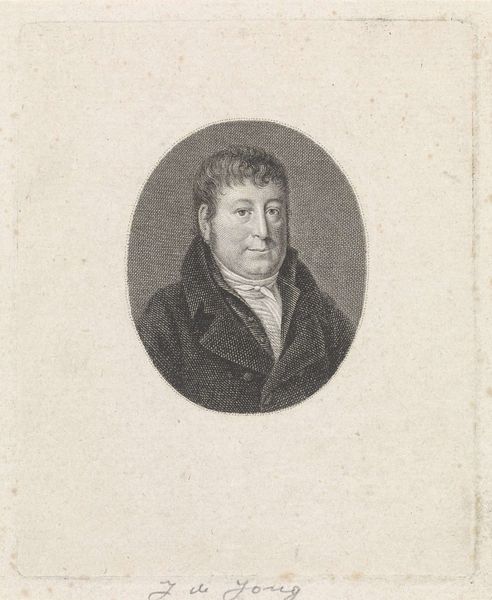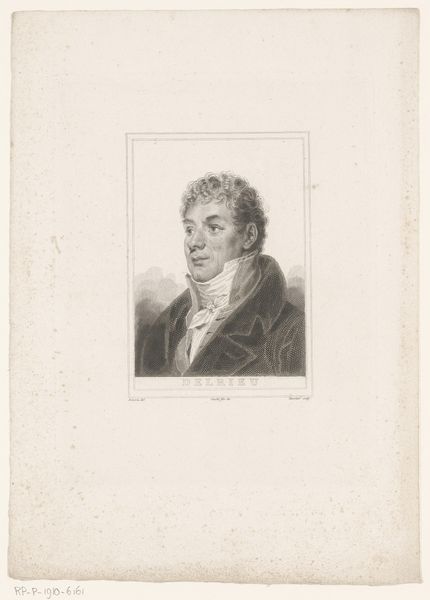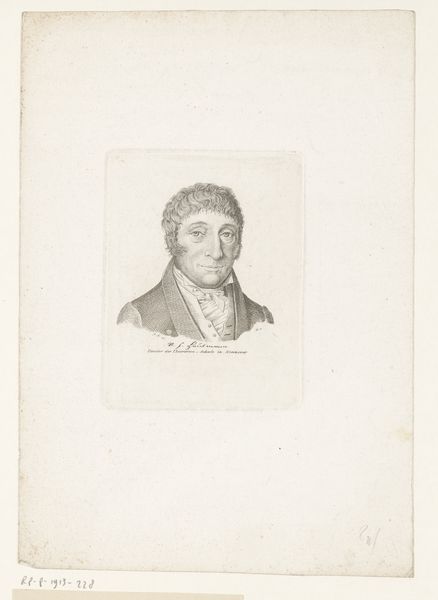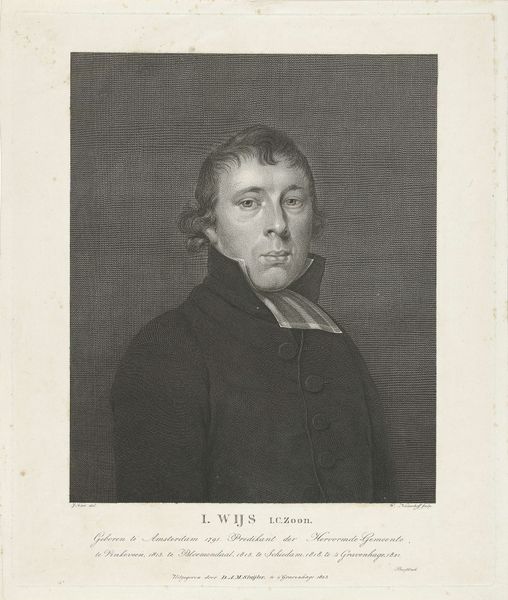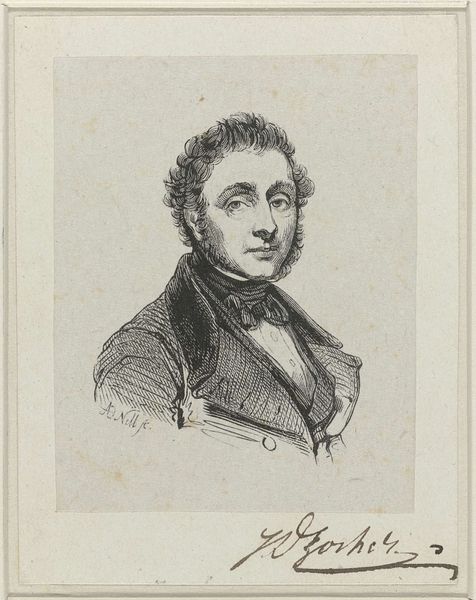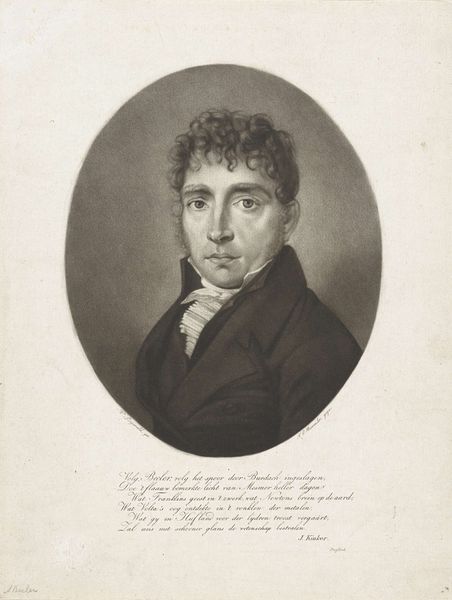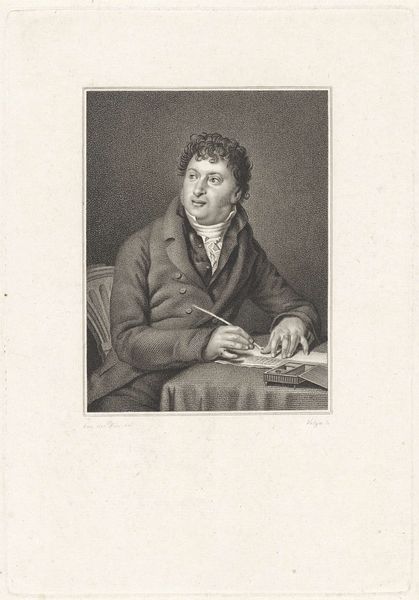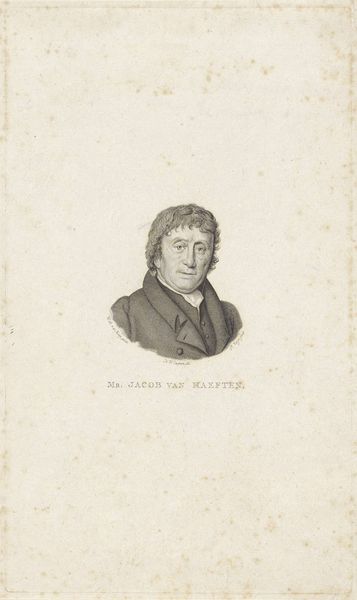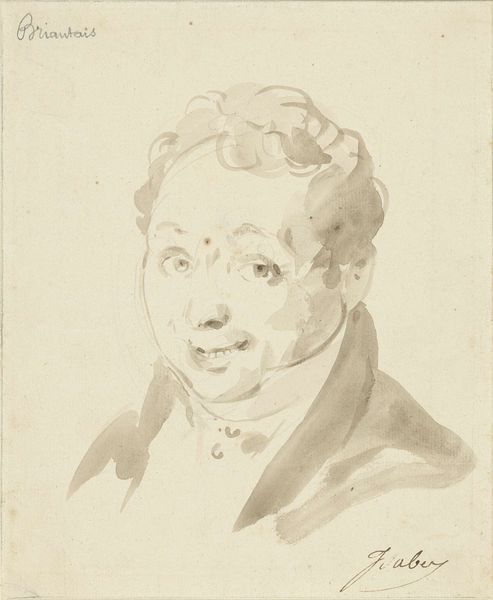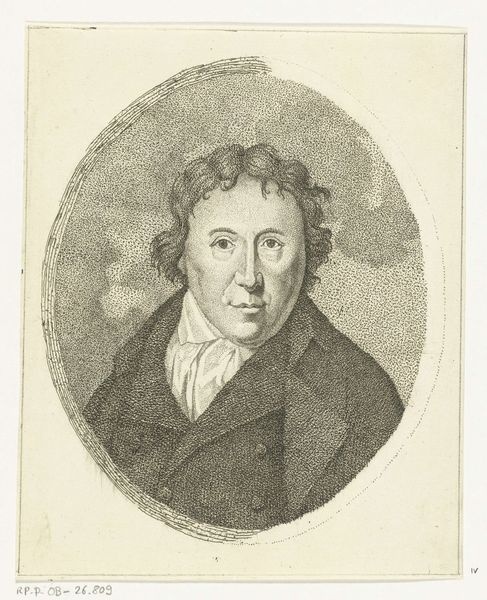
print, engraving
#
portrait
#
neoclacissism
# print
#
engraving
#
realism
Dimensions: height 251 mm, width 189 mm
Copyright: Rijks Museum: Open Domain
Curator: Here we have a fascinating portrait currently residing in the Rijksmuseum: it's a print titled "Portret van Raffaelle Morghen" by Paolo Caronni, made sometime between 1789 and 1842. Editor: There's a kind of subdued elegance to it, a softness even though it’s an engraving. The grey tones evoke a thoughtful mood. Curator: Absolutely. Caronni captures Morghen, himself a renowned engraver, in a way that elevates his intellectual standing. The gaze is direct but not confrontational, signaling perhaps a sense of wisdom, confidence but with restraint. Neoclassical restraint. Editor: Engraving, isn’t it laborious? I’m thinking of the sheer time and the focused labor involved in creating the image through tiny incisions. How does that repetitive process influence the final aesthetic effect and its social reception? Curator: That's a keen observation. The medium undeniably lends the work an air of precision, of calculated elegance reflective of Neoclassicism. Consider also, the symbolism behind the portrait itself. Editor: Symbols? I was more caught up with the textures. Look at the layering and the weight, almost architectural. That fur-trimmed coat must have taken hours to render. Curator: Indeed. Yet it speaks of status, knowledge, an elite within a society, reflecting perhaps a specific philosophical school or artistic circle, and notice the soft ruffled collar! Its delicacy plays against the dark coat. It is also worth noting that the subject of the engraving is himself, the artist. In which sense the image can be regarded as the translation of an identity. Editor: It gives insight into what society held of value and perhaps more intimately into Morghen as both the artisan and intellectual through the eyes, the engraving needle of Caronni. A fascinating intersection between labor, symbolism and society's value system all laid out here in shades of gray. Curator: It certainly provides us with a rich visual encapsulation of the artistic, intellectual, and social ideals circulating at the time, as well as of the artist's perception of them. Editor: Yes, now looking at it from that viewpoint has indeed enriched the picture’s narrative for me.
Comments
No comments
Be the first to comment and join the conversation on the ultimate creative platform.
